Handheld VHF Radios
Since your Marine handheld VHF radio gives you a lifeline to the outside world, it’s important to spend time perusing your choices to select the best model to fit your needs. Since handheld VHF radios come in a wide variety of shapes and sizes, many of which are portable, be sure to shop around before committing to a single model. After all, this device may one day save your life.
(more...) What is a handheld VHF radio and why should you use it? A handheld very high-frequency (VHF) radio, also known as big radios, two-way radios, or company radios, is a worldwide system that operates as a two-way transceiver on ships and watercraft. The allows voice communication from ship-to-ship, ship-to-shore, and in certain circumstances, ship-to-aircraft. That said, similar to a flotation life vest, it’s a must-have safety feature that should be on board all water vessels. As an essential piece of equipment for boaters who spend time out in open waters, these devices operate by transmitting power and can be used to contact the Coast Guard in case of an emergency. They also aid communication between other vessels in the area. This is why your handheld VHF marine radio should be accessible at all times. Aside from the obvious safety features, there are many other advantages to having a handheld VHF radio on board, including granting boat operators access to important updates such as weather reports. Are there different types of VHF marine radios? The short answer is yes! While handheld VHF marine radios are the most popular type of very high-frequency radio due to their lightweight portability, you have the option to install a fixed-mount unit that is hard-wired to the boat, possessing many of the same safety features are their handheld counterparts. Aside from size, the most noteworthy difference between a handheld VHF marine radio and a hard-wired marine radio is that many handhelds will float. Floating handheld VHF radios are water-resistant navigation systems that will remain afloat if your vessel capsizes. While no one ever wants to find themselves in a situation where this feature is tested, it’s important that your life-saving radio can be retrieved in the water—nevertheless, all of today’s VHF radios ease communication from port to water, while also allowing boat operators to broadcast an SOS complete with GPS coordinates at the touch of a button if an emergency arises. How to use a handheld VHF radio This piece of safety equipment could save your life and the life of your passengers, so you must become familiar with its functions before a time when you need to put it to good use. How to choose the best handheld VHF radio Since we can’t suggest a single radio and have it be the best option for everyone, we’re offering you an easy guide below to help you pick it out! Here are some elements to consider: Water-resistance If you’re going to spend the money to invest in a handheld VHF marine radio, it might as well be waterproof. Be sure to examine the features of your selected unit to see its water-proof rating. Some units are only water-resistant, while others—look for IPX8—can be submerged in water below 1 meter in depth. Floating As mentioned above, a floating VHF radio is a great investment. Since water can be unforgiving with electronic devices, it’s best to have a floating unit just in case it gets unintentionally knocked into the water. You’ll thank us later! Battery life When you’re relying on a product for safety and security, battery life is an important consideration. Be aware that your handheld VHF marine radio uses battery power when it is on standby alongside when it is in active use. So, be sure to consider this when selecting which watt output setting you want to use. Transmission range Each handheld VHF radio possesses a different transmission range that is dependent on the power output setting. However, as a general rule of thumb, most handheld units are between one and six watts and will have a single watt for one nautical mile of range.
Showing all 10 results
-
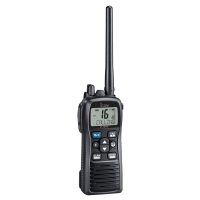
Icom IC-M73 Handheld Marine VHF Radio
$216.74 USD – $267.29 USD Select options This product has multiple variants. The options may be chosen on the product page -
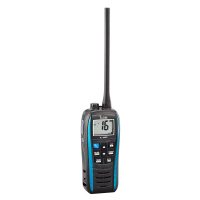
ICOM M25 Marine Handheld VHF Radio
$132.90 USD Select options This product has multiple variants. The options may be chosen on the product page -
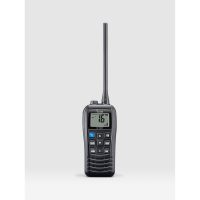
Icom M37 Floating 6 Watt Handheld Marine VHF Radio
$195.07 USD Add to cart -
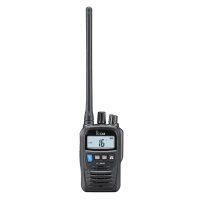
Icom M85 Marine Waterproof Handheld VHF Radio
$325.12 USD Add to cart -
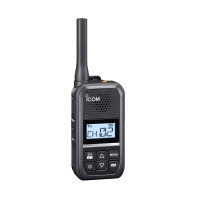
ICOM U20GM Compact GMRS/FRS Transceiver
$97.50 USD – $187.81 USD Select options This product has multiple variants. The options may be chosen on the product page -
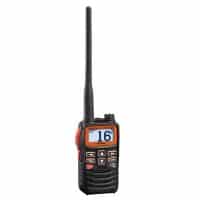
Standard Horizon HX40 6W Compact Handheld VHF
$115.56 USD Add to cart -
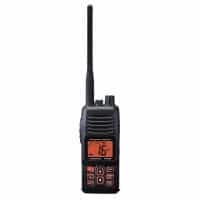
Standard Horizon HX400IS Submersible 5 Watt Handheld VHF Radio
$274.51 USD Add to cart -
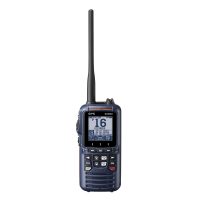
Standard Horizon HX890 Floating 6 Watt Class H DSC Handheld VHF/GPS
$214.55 USD Select options This product has multiple variants. The options may be chosen on the product page -
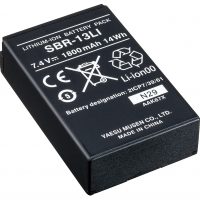
Standard Horizon SBR-13LI 1800mAh Lithium Ion Battery
$57.76 USD Add to cart -
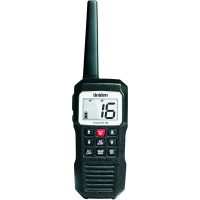
Uniden Atlantis 155 Handheld Floating Marine VHF Radio
$79.44 USD Add to cart


